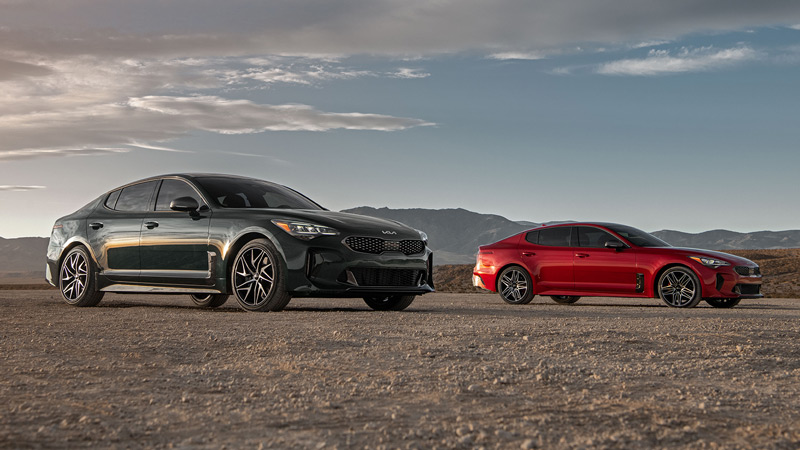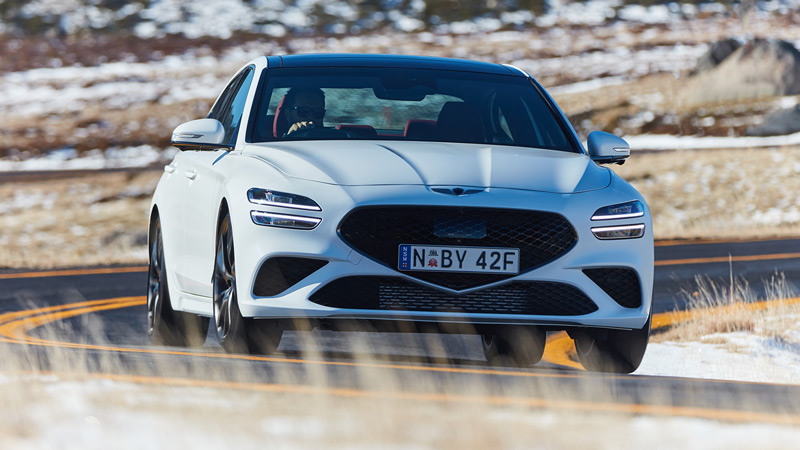As the saying goes, “Shoot for the moon, and even if you miss it, you will land among the stars”. If reports from South Korea are true, the Kia Stinger is flying wide of its moon-shot goal. And plans are afoot to abort, not just this generation, but the whole concept of a rear-wheel-drive enthusiast-pandering sedan. Say it isn’t so!

According to a report from Daily Car, Kia will be winding up production of the Kia Stinger in the second half of next year. If true, the ambitious rear-wheel-drive liftback will bow out after its fifth year on sale. Hardly an old-timer by car lifecycles.
The report also mentions that Kia’s intent to stop production of the Stinger is to make way for the mass production of the company’s new electric models. Further reports also imply that the South Korean carmaker won’t follow up the nameplate with a successor.

Currently, we only have Daily Car’s reporting to go on, so this news is still in the realm of speculation. However, considering that sales of the Stinger has been underwhelming, and continues to disappoint, its premature end is plausible.
While it is certain that the Stinger is a sales disaster, what is yet to be made certain is what killed it?
What killed the Kia Stinger?

Social media’s answer is unsurprising. Most responses gloat of an overreaching Kia getting burned that nobody wants to buy an expensive rear-drive Korean car. Like every answer you’d find on social media, it is overgeneralised and devoid of nuance.
Other views expressed on online forums like Reddit paint a different picture. While many celebrate its merits, several respondents are turned off by the notion of having to deal with the dealers rather than the badge. And this isn’t a surprising response for those outside the motoring media bubble.

It is no secret that dealing with an enthusiast customer is far different from a budget-conscious one buying on credit. Jack Baruth has an excellent rant on why dealers would rather see enthusiasts choke on their money than accept it. It is worth a read if you have the time.
To any salesperson, a good customer does not ask questions and buys whatever deal is handed to them. But selling an expensive car to an enthusiast crowd requires tact and ego-stroking.

“No, we know better than a salesperson because we read reviews!” Goes the usual line of customer reasoning for interrupting a sales pitch. “Also, we want to spec it, and don’t give us the showroom model!”
Imagine the amount of time and patience needed to convince the convinced that you aren’t trying to do them dirty. Whereas the average customer just wants to be shown a right-sized model for the right price. No wonder salespeople who peddle quantity over quality avoid enthusiasts like the plague.
Getting Casio to sell a Rolex

This difference in customer profiles is one of the reasons why luxury brands splinter off into a standalone brand. A case in point is Hyundai’s new Genesis luxury brand and its BMW 3 Series challenger, the rear-drive G70.
Introduced in the same year as the Stinger, sales of the G70 are consistent whereas its Kia counterpart is faltering. On the face of it, this shouldn’t make sense. The Genesis name is an unknown quantity in the luxury market, which should play against it.

Furthermore, Genesis pitches the G70 as “just another BMW 3 Series competitor”, and not an “enthusiast special” like the Stinger. Some might argue that the Stinger might be suffering from a case of being an unfamiliar entry in the marketplace. The same reasons that torpedoed the ill-fated BMW 3 Gran Turismo. Though that would only play a relatively minor role in the Stinger’s fate.

The dissonance between customer expectations and dealer execution is likely the crux of the Stinger’s popularity problem. Lately, several car companies have been moving towards creating dedicated sub-brand dealerships. Mercedes-Benz has started opening dedicated Mercedes-AMG dealerships and sub-brands like Citroën’s DS growing its dealer network.

While it is obvious that you can’t depend on a Casio sales rep to sell a Rolex, the less obvious question is, what is the standard for “a Rolex” for cars? Are “enthusiast’s cars” exclusively the realm of snobby brands? That would be quite nightmarish to assume so. But that may not be the case, because the standard itself may be changing.
What defines a desirable car?

For decades the mark of quality was having a large, dirty-sounding engine up front with power sent to the rear. Then it didn’t matter if it had a big engine, so long as the chassis delivered the goods. Then it didn’t matter if it was rear-wheel drive, so long as it looked striking. Now, it might not even need an engine to draw up those cheques.
Already Kia is tooting the electric car horn as where it will create its next performance icon from. It sounds like another hubristic boast, but there is some truth in that.

Dunk on the notion that nobody will buy a souped-up golf kart all you want, there is evidence that people are paying serious money for serious electric car performance. And we aren’t talking about Tesla-stans.
According to The Intercooler, most buyers of Rimac’s amazing €2 million 1407kW all-electric Nevera hypercar hail from a younger generation. Most of these buyers hail from the tech industry with no interest in wine and dining with salespeople. They aren’t even interested in reading reviews or impressing friends with their purchases. Oblivious to the ongoing bombastic rot going on in mainstream motoring media.

What’s more, they don’t have any esoteric obsession with old-world machinations. Not only do they drive a Tesla or a Prius, but they dislike the noise and hullabaloo of a big and exotic combustion engine. It is almost as though a generation’s perception of automotive excellence changes from one epoch to the other.

If there are enough rich techies out there to buy Nevera, who knows how many less affluent but like-minded individuals with similar dreams are out there? Who is Kia to say that there won’t be an electric vehicle reckoning for the enthusiast market on the horizon? It’s not as though the Stinger is making gangbusters now.
Kia Stinger makes way for the electric car reckoning

Formula E is a long way off from winning over traditional petrol heads. Tesla’s build quality is still subpar. And today’s charging infrastructure falls short of adequate for an EV-driving populace.
Yet, electric vehicles have dominated the conversation on performance and technology in the last few years like no other. So much so that it has gained a new and unforeseen aspirational quality that is attracting the world’s top carmakers.

Kia is aware of where the wind is blowing. The surefootedness and clean conscience afforded by electric propulsion is a win-win situation for the South Korean giant. The Stinger experiment is a failure, but not one of overambition.
An ill-fitting dealer network and a sea change in the automotive landscape sealed its fate. There was nothing wrong with the Kia Stinger. It may have failed in galvanising a new generation, but it is starward bound and destined to live on as a cult classic. A status that no detractor can take away.

Just like the hybrid, forces beyond its control have shifted the spotlight. Maybe it’s time Kia shift too. Like any star, the Stinger’s shine will fade away with the coming of a new dawn, but it will still be there to those who look.

